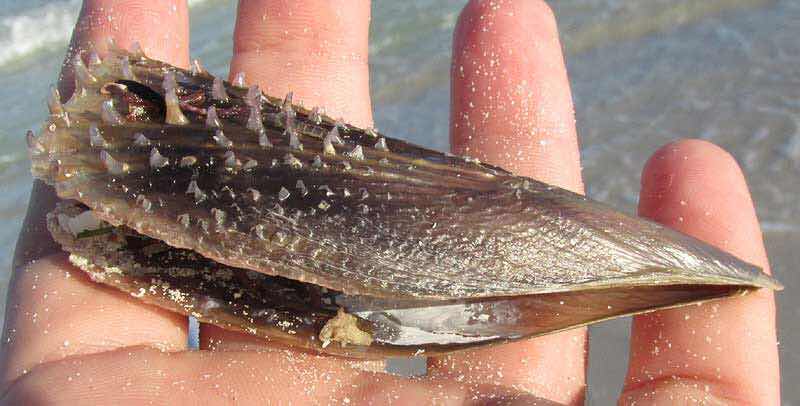First beach walk (on my new knee). I thought it would be hard getting through the loose sand and out to the harder surface near the water, but it was fine and we enjoyed a long walk. It couldn’t have been a more beautiful day to be out there.
Horseshoe crab bodies are beginning to appear, as are washed-up jelly fish.
Also lots of these ...
 Pen shells, home of an edible mollusk related to clams, wash ashore as the waters begin to warm. They can grow to be 12 inches long, I’ve read, but the ones we see are four to maybe five inches long.
Pen shells, home of an edible mollusk related to clams, wash ashore as the waters begin to warm. They can grow to be 12 inches long, I’ve read, but the ones we see are four to maybe five inches long.
In the water, the pen shells dig down into the sand with their pointed end until only the fringe top part of the shell is left above the sand. Then they spin threads from a gland in their foot and attach themselves to a hard object such as a piece of rock or a large buried shell.
These threads (called byssus) were harvested in ancient Mediterranean countries and China and weavers wove the “sea silk” into highly prized golden yellow cloth. The practice continued into the 20th century and there are still a few artisans who continue the tradition in Sardinia.
Now the main value of the pen shells is their job as filter feeders that help to keep our increasingly polluted seas a little cleaner.
Once a pen shell is pulled loose from the bottom it cannot reattach, and these are the pen shells that wash up on the beach.
That isn’t all we found at the beach though. Someone had been having a whole lot of delightfully creative fun!


Woo Hoooo! So good to be back at the beach!